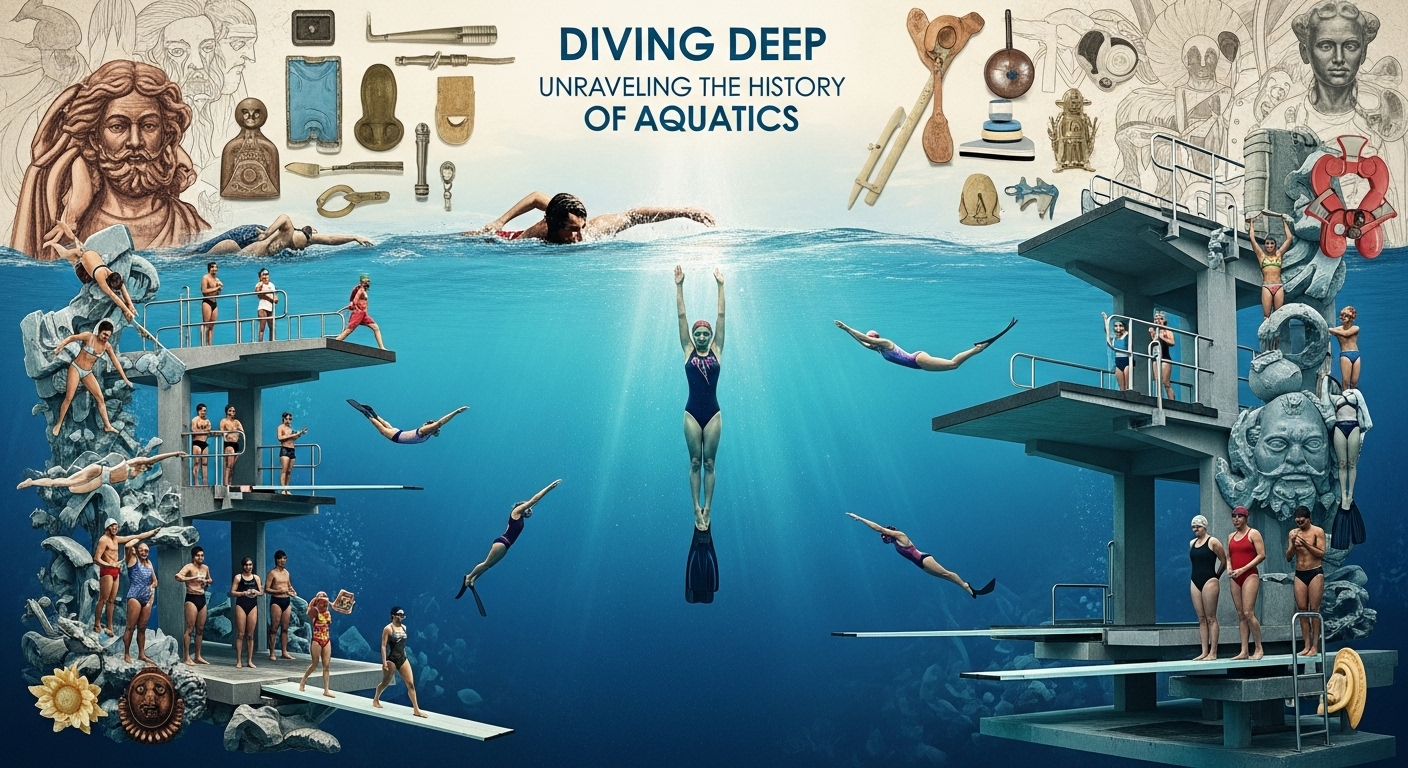Diving Deep: Unraveling the History of Aquatics

Aquatics: Exploring the World of Water
Aquatics, the study and practice of activities related to water, has a rich history dating back thousands of years. From ancient civilizations to modern-day enthusiasts, the significance of aquatics has evolved and expanded, encompassing a wide range of applications and fostering a deep connection with water. In this blog post, we will delve into the captivating world of aquatics, exploring its history, significance, applications, and future trends.
### History of Aquatics
The history of aquatics can be traced back to ancient civilizations such as the Egyptians, Greeks, and Romans, who recognized the therapeutic and recreational benefits of water. In ancient Rome, public baths served as social hubs where people gathered to relax, exercise, and socialize. These early practices laid the foundation for the development of aquatics as a discipline that combines physical activity with the healing properties of water.
Aquatics gained further prominence in the 19th century with the establishment of swimming schools and the organization of competitive swimming events. Swimming became an essential life skill, leading to the formation of national governing bodies and the inclusion of aquatic sports in the Olympic Games. Today, aquatics encompasses a wide range of activities, including swimming, diving, water polo, synchronized swimming, and open water swimming, each with its unique history and traditions.
### Significance of Aquatics
Aquatics plays a crucial role in promoting physical fitness, mental well-being, and social engagement. Swimming, in particular, is a low-impact exercise that provides a full-body workout, improves cardiovascular health, and enhances flexibility and coordination. Aquatic therapy, also known as hydrotherapy, is used to rehabilitate injuries, manage chronic conditions, and relieve stress. Furthermore, aquatic sports foster teamwork, discipline, and sportsmanship, instilling valuable life skills in participants.
Beyond individual benefits, aquatics contributes to community development and environmental conservation. Public pools and aquatic centers serve as gathering places where people of all ages and backgrounds can come together to swim, learn, and compete. Aquatic facilities also promote water safety education and drowning prevention, raising awareness about the importance of swimming skills and water competency. Moreover, aquatic ecosystems, including oceans, rivers, and lakes, support biodiversity, regulate climate, and provide valuable resources for human livelihoods.
### Applications of Aquatics
Aquatics extends beyond recreational activities and competitive sports to encompass a wide range of applications in various fields. In healthcare, aquatic therapy is used to treat musculoskeletal injuries, neurological disorders, and chronic pain conditions. Aquatic exercise programs are also recommended for individuals with arthritis, fibromyalgia, and obesity, offering a safe and effective way to improve physical function and quality of life.
In education, aquatics programs are integrated into school curricula to teach water safety skills, promote physical fitness, and enhance cognitive development. Swimming lessons are often included in physical education classes to ensure that students acquire essential swimming abilities and water survival techniques. Additionally, aquatics-based learning experiences, such as marine biology field trips and outdoor water sports camps, provide students with hands-on opportunities to explore aquatic environments and learn about marine ecosystems.
### Future Trends in Aquatics
Looking ahead, the future of aquatics is shaped by emerging trends in technology, sustainability, and inclusivity. Advancements in aquatic equipment, such as swimwear, goggles, and training aids, enhance performance, comfort, and safety for athletes and recreational swimmers alike. Digital platforms and mobile applications offer virtual coaching, training programs, and performance tracking tools to support aquatic enthusiasts in achieving their fitness goals and monitoring their progress.
In terms of sustainability, efforts are being made to conserve water resources, reduce pollution, and protect aquatic habitats from degradation. Eco-friendly practices, such as water conservation measures, waste recycling, and habitat restoration projects, aim to preserve the natural beauty and ecological integrity of aquatic ecosystems. Furthermore, initiatives promoting diversity and inclusion in aquatics strive to create welcoming and accessible environments for individuals of all ages, abilities, and backgrounds to participate in water-based activities and enjoy the benefits of aquatics.
### Conclusion
In conclusion, aquatics is a multifaceted domain that encompasses a rich tapestry of history, significance, applications, and future trends. From its ancient origins to its modern-day manifestations, aquatics continues to inspire and engage individuals around the world, fostering a deep appreciation for the transformative power of water. Whether through swimming laps in a pool, diving into the depths of the ocean, or simply splashing in a local lake, aquatics offers a gateway to physical, mental, and social well-being, connecting us to the wonders of the aquatic world. Embrace the spirit of aquatics, dive in, and let the water carry you on a journey of discovery and exploration.

